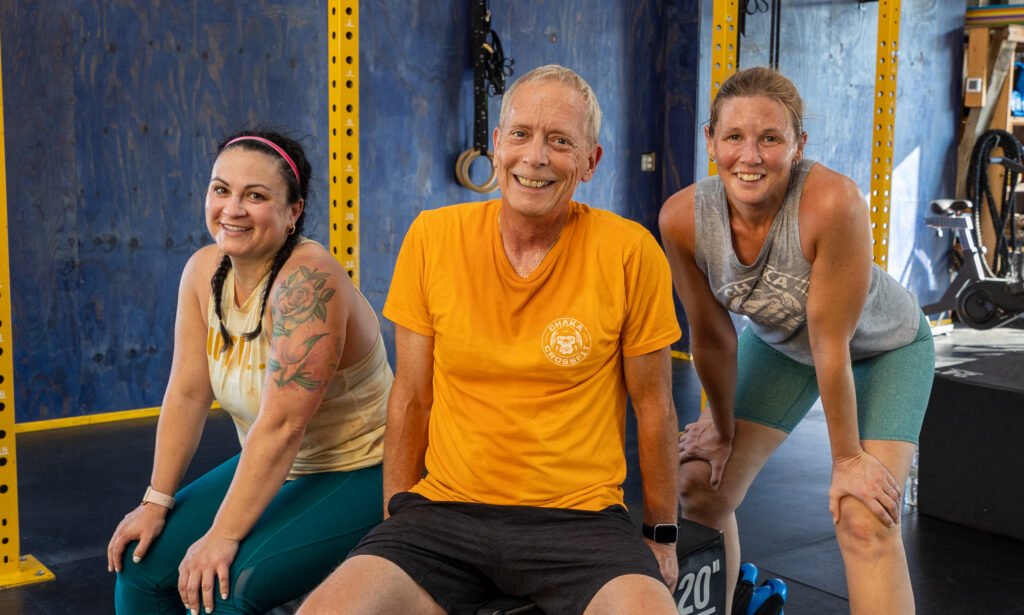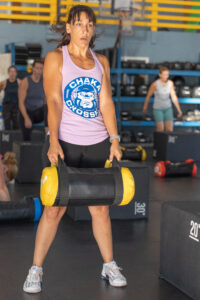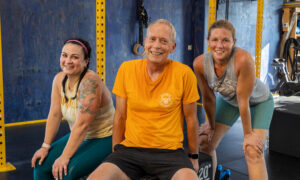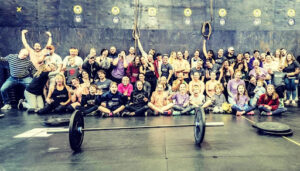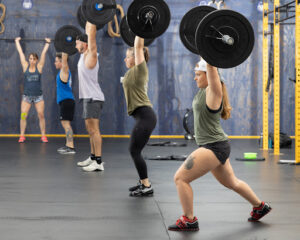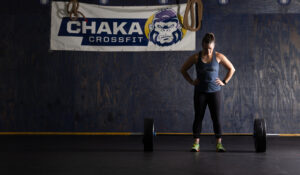Just because you’re over 40 doesn’t mean you have to hang up your CrossFit shoes. In fact, with the right coaching, injury prevention and recovery strategies in place, you can continue crushing your WODs well into your 40s and beyond. In this informative blog post, we’ll examine practical tips and techniques to help you stay injury-free and recover faster, so you can keep thriving in your CrossFit journey. Get ready to conquer the box with confidence and longevity!
Key Takeaways:
- Listen to Your Body: Pay attention to any signs of pain or discomfort during your CrossFit workouts, especially as you age over 40. It’s crucial to know when to rest and when to push yourself to prevent injuries.
- Proper Warm-Up and Cool Down: Prioritize warming up your muscles before intense CrossFit sessions to reduce the risk of strains or tears. Also, remember to cool down properly to help your muscles recover and prevent stiffness.
- Focus on Mobility and Recovery: Incorporate mobility exercises and recovery techniques, such as stretching, foam rolling, and getting enough sleep, into your routine. These practices can help improve flexibility, reduce muscle soreness, and promote overall recovery.
Identifying High-Risk Movements
To ensure injury prevention and optimal recovery in CrossFit training for individuals over 40, it is crucial to identify high-risk movements that may lead to potential injuries. By recognizing these exercises, participants can adjust their training routines and techniques to minimize the risk of harm.
Common Injuries in CrossFit
CrossFit is a high-intensity fitness program that combines elements of weightlifting, gymnastics, and cardio. With its varied movements and intense workouts, common injuries in CrossFit over 40 may include strains, sprains, tendonitis, and overuse injuries. It is crucial to pay attention to warning signs such as persistent pain, swelling, or decreased range of motion to address potential injuries promptly.
Age-Related Vulnerabilities
Common age-related vulnerabilities in CrossFit over 40 include decreased muscle mass, joint flexibility, and bone density. As individuals age, they may experience a decline in overall physical performance, making them more susceptible to injuries during high-impact activities. It is vital to modify workout routines, incorporate proper warm-ups, and focus on mobility exercises to mitigate the risk of injury and promote recovery.
Incorporating targeted strength training programs and flexibility exercises can help mitigate age-related vulnerabilities in CrossFit participants over 40. By focusing on building muscle strength, improving joint mobility, and enhancing balance, individuals can enhance their performance and protect themselves from potential injuries. It is crucial to listen to your body, respect your limitations, and work with qualified coaches or trainers to tailor your CrossFit training regimen to your specific needs and goals.
Building a Strong Foundation
Even before jumping into intense CrossFit workouts, it’s crucial to build a strong foundation to prevent injuries and ensure optimal performance. This foundation includes improving mobility and flexibility, strengthening core and glutes, and enhancing balance and coordination.
Mobility and Flexibility Exercises
The key to injury prevention and performance enhancement in CrossFit for individuals over 40 lies in improving mobility and flexibility. The ability to move freely through a full range of motion not only prevents injuries but also enhances the effectiveness of your workouts. Incorporating exercises such as dynamic stretches, foam rolling, and yoga can help increase flexibility and mobility in key joints and muscles.
Strengthening Core and Glutes
An vital aspect of building a strong foundation for CrossFit over 40 is strengthening the core and glutes. These muscle groups play a vital role in stabilizing the body during movements and preventing injuries. By focusing on exercises that target the core, such as planks, Russian twists, and bicycle crunches, you can improve your overall strength and stability. Additionally, performing glute-strengthening exercises like squats, lunges, and hip thrusts can help enhance your performance and reduce the risk of injuries.
By incorporating core and glute strengthening exercises into your fitness routine, you can improve your posture, balance, and overall strength. A strong core and stable glutes are vital for performing complex movements in CrossFit and can help you avoid common injuries associated with age and intense workouts.
Improving Balance and Coordination
Coordination and balance are key components of a strong foundation for CrossFit over 40. As we age, our balance and coordination tend to decline, increasing the risk of falls and injuries. By incorporating exercises that challenge your balance, such as single-leg squats, stability ball exercises, and proprioceptive drills, you can improve your coordination and stability. These exercises not only help prevent injuries but also enhance your overall performance in CrossFit workouts.
Improving balance and coordination is crucial for mastering complex movements in CrossFit and reducing the risk of falls and injuries. By including balance-focused exercises in your training routine, you can enhance your overall athletic performance and maintain your fitness as you age.
Injury Prevention Strategies
Not paying attention to injury prevention strategies can be detrimental to your CrossFit journey, especially as you age. By implementing some key practices, you can minimize the risk of injuries and keep performing at your best.
Proper Warm-Ups and Cool-Downs
The first line of defense against injuries in CrossFit is a proper warm-up and cool-down routine. Spending time to prepare your muscles and joints before a workout and allowing them to recover afterward can significantly reduce the likelihood of strains, sprains, and other injuries.
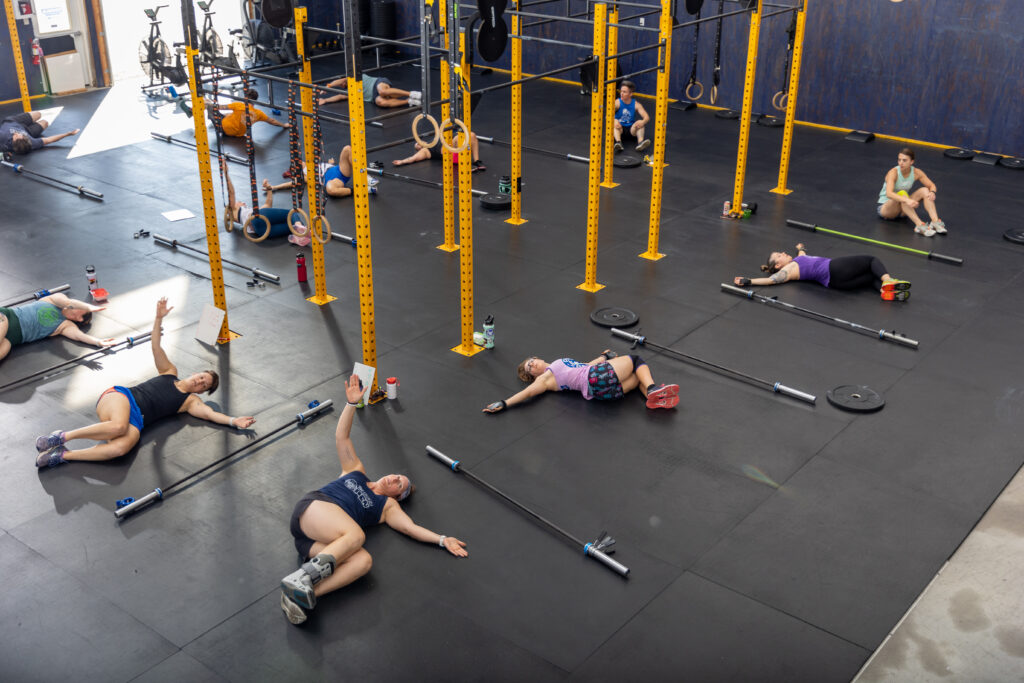
Scaling and Modifying Exercises
The importance of scaling and modifying exercises cannot be overstated, especially as you navigate CrossFit in your 40s and beyond. By adjusting movements to match your current fitness level and potential limitations, you can still challenge yourself without risking overexertion or injury.
Another benefit of scaling and modifying exercises is the ability to focus on form and technique. By performing movements correctly and with proper alignment, you can enhance your performance while safeguarding yourself against unnecessary strain.
Listening to Your Body
The key to injury prevention in CrossFit, particularly as you age, is learning to listen to your body. Your body will often send signals when it’s being pushed too hard or when something doesn’t feel right. Ignoring these warning signs can lead to injuries that may sideline you for weeks or even months.
Injury prevention is not just about physical practices but also about being in tune with how your body responds to different movements and intensities. By respecting your body’s limits and giving it the rest and recovery it needs, you can mitigate the risk of injuries and sustain your performance over the long term.
Recovery Techniques
Now, let’s examine some effective recovery techniques for CrossFit athletes over 40. Proper recovery is crucial for preventing injuries and ensuring longevity in your fitness journey.
Foam Rolling and Self-Myofascial Release
The use of foam rollers and self-myofascial release techniques can help release tension in tight muscles, improve circulation, and enhance range of motion. By targeting trigger points and knots in the muscles, you can reduce muscle soreness and prevent potential injuries. Incorporating foam rolling into your routine, especially after intense workouts, can aid in faster recovery and improved performance.
Stretching and Mobility Exercises
An imperative aspect of recovery is enhancing flexibility and joint mobility through stretching exercises. Dynamic stretches before your workout can help loosen up tight muscles and improve blood flow to the muscles, preparing them for the workout ahead. Static stretches post-workout can help reduce muscle stiffness and aid in muscle recovery. Including mobility exercises in your routine can also help improve your overall range of motion and prevent injuries in the long run.
For instance, incorporating yoga or Pilates classes into your weekly routine can be beneficial for improving flexibility and strengthening stabilizing muscles. These low-impact exercises can help alleviate muscle tightness, improve posture, and increase body awareness, all of which are imperative for CrossFit athletes over 40.
Active Recovery Methods
One effective way to promote recovery is through active recovery methods such as light cardio, swimming, or leisurely cycling. Engaging in low-intensity activities on rest days can help increase blood flow to the muscles, flush out metabolic waste, and promote recovery without putting additional stress on the body. Active recovery sessions can help reduce muscle soreness, improve circulation, and enhance overall recovery between intense workouts.
It is imperative to listen to your body and adjust your recovery techniques based on how you feel. Experiment with different methods and find what works best for you in promoting recovery and preventing injuries in your CrossFit training over 40.
Nutrition for Injury Prevention and Recovery
All athletes, especially those over 40, can benefit from a strategic approach to nutrition to support their training and recovery. Proper nutrition plays a crucial role in preventing injuries and promoting healing when injuries occur. Let’s look into some key nutritional strategies to keep you moving and feeling your best in your CrossFit journey.
Anti-Inflammatory Foods
To support injury prevention and recovery, incorporating anti-inflammatory foods into your diet can be highly beneficial. Foods such as fatty fish, leafy greens, berries, nuts, and seeds are rich in antioxidants and anti-inflammatory compounds that help reduce inflammation in the body. By including these foods in your meals, you can support your body’s natural healing processes and reduce the risk of chronic inflammation that may lead to injuries.
Post-Workout Nutrition
Anti-inflammatory post-workout nutrition is necessary for promoting recovery and reducing muscle soreness after intense training sessions. Consuming a combination of protein and carbohydrates within 30 minutes to an hour after your workout can help replenish glycogen stores, repair muscle tissue, and reduce inflammation. Opt for protein sources like chicken, eggs, or protein shakes, paired with complex carbohydrates like quinoa, sweet potatoes, or fruits to support optimal recovery.
Foods rich in antioxidants, such as blueberries, cherries, and dark leafy greens, can also help combat the oxidative stress caused by intense workouts. Including these foods in your post-workout meals or snacks can aid in repairing cellular damage and promoting overall recovery.
Hydration and Electrolyte Balance
Any athlete, especially those engaging in high-intensity training like CrossFit, must prioritize hydration and electrolyte balance for optimal performance and recovery. Proper hydration is key for regulating body temperature, lubricating joints, and transporting nutrients to cells. Electrolytes like sodium, potassium, and magnesium play a crucial role in maintaining fluid balance and muscle function.
Injury prevention can be supported through adequate hydration, as dehydration can impair performance and increase the risk of injuries. Maintaining electrolyte balance is equally important, as an imbalance can lead to muscle cramps, fatigue, and decreased exercise capacity. Incorporating electrolyte-rich foods like bananas, leafy greens, and nuts, along with staying well-hydrated, can help you perform at your best and minimize the risk of injuries during your CrossFit training.
Sleep and Stress Management
Importance of Adequate Sleep
Sleep is crucial for overall health and recovery, especially as we age. It is during sleep that our bodies repair and rebuild muscle tissue, regulate hormones, and consolidate memories. For CrossFit athletes over 40, getting at least 7-9 hours of quality sleep per night is important to support performance and injury prevention.
Managing Stress and Cortisol Levels
The body’s stress response, regulated by cortisol, can have a significant impact on recovery and performance. High levels of stress and cortisol can lead to muscle breakdown, impaired immune function, and increased risk of injury. Managing stress through techniques like meditation, deep breathing, and mindfulness can help optimize recovery and keep cortisol levels in check.
The body’s stress response, regulated by cortisol, can be triggered by intense workouts, work pressure, or personal issues. Finding ways to reduce stress levels through relaxation techniques can significantly improve recovery and overall well-being.
Relaxation Techniques for Recovery
For CrossFit athletes over 40, incorporating relaxation techniques such as yoga, stretching, or massage therapy into their routine can help reduce muscle tension, improve flexibility, and enhance recovery. These practices not only promote physical relaxation but also mental calmness, which is beneficial for managing stress and promoting better sleep quality.
Another effective relaxation technique for recovery is progressive muscle relaxation, where you systematically tense and release different muscle groups in the body. This practice can help relieve physical tension, promote circulation, and enhance overall relaxation for improved recovery.
Conclusion
The strategies highlighted in this article offer valuable insights for individuals over 40 engaged in CrossFit, emphasizing the importance of injury prevention and recovery. By incorporating proper warm-up routines, focusing on mobility exercises, implementing rest days, and paying attention to proper nutrition and hydration, one can enhance their performance and reduce the risk of injuries. It’s crucial to listen to your body, prioritize recovery, and work on strengthening weak areas to build a strong foundation for sustainable fitness progress.
The journey of fitness and health is a personal one, and taking a proactive approach to prevent injuries and aid in recovery can make a significant difference in achieving long-term success. By implementing these strategies consistently and adapting them to individual needs and limitations, individuals over 40 can continue to enjoy the benefits of CrossFit while minimizing the risk of setbacks. Note, prevention is key, and by investing in your body’s well-being, you can optimize your performance and overall quality of life as you pursue your fitness goals with CrossFit.
FAQ
Q: Why is injury prevention important for CrossFit athletes over 40?
A: Injury prevention is crucial for CrossFit athletes over 40 to ensure they can continue training consistently and avoid setbacks that may come with age-related changes in the body.
Q: What are some key strategies for preventing injuries in CrossFit athletes over 40?
A: Some key strategies include proper warm-ups, focusing on mobility and flexibility, listening to your body, scaling workouts when needed, and incorporating rest days into your routine.
Q: How can mobility and flexibility work help prevent injuries in CrossFit athletes over 40?
A: Improved mobility and flexibility can help reduce the risk of strains and injuries by ensuring your muscles and joints can move through their full range of motion during workouts.
Q: What role does recovery play in injury prevention for CrossFit athletes over 40?
A: Recovery is crucial for allowing your body to repair and adapt to the stress of training, which can help prevent overuse injuries and keep you performing at your best.
Q: How should CrossFit athletes over 40 approach programming to prevent injuries?
A: CrossFit athletes over 40 should focus on varying their workouts, emphasizing quality over quantity, and working with coaches who understand the unique needs of older athletes to prevent injuries and promote longevity in the sport.

